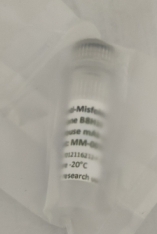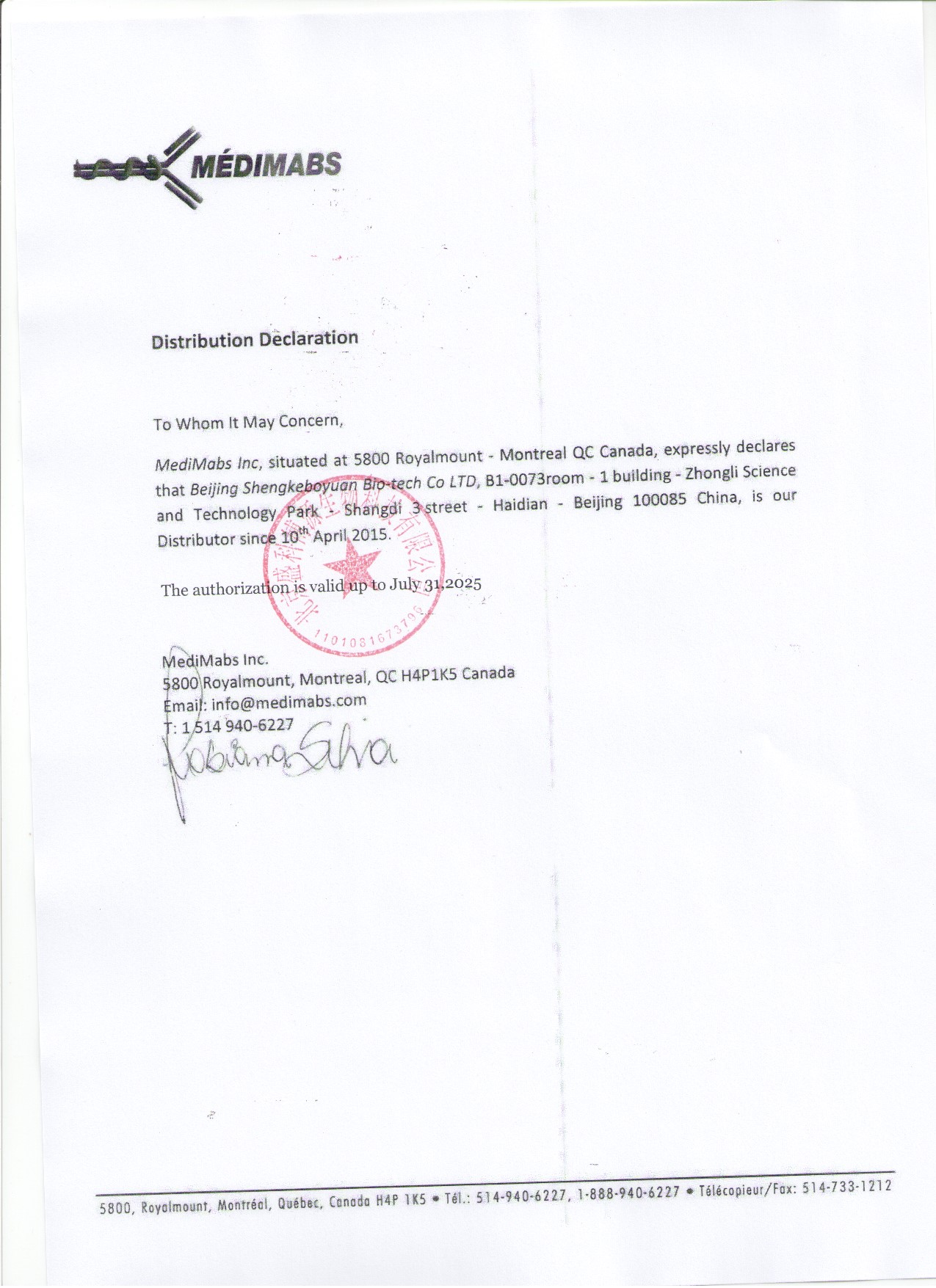 首页>
生物试剂
首页>
生物试剂
商家描述
商家资质信息
产品评价(0)
Target
DMT1
Target background
The Divalent Metal Transporter 1 (DMT-1) also known as the Natural resistance-associated macrophage protein 2 (NRAMP 2) is a protein implicated in metal transport, in particular iron. NRAMP 2 can also transport different divalent cations. NRAMP 2 transports iron from acidified endosomes into cytoplasm of erythroid precursor cells. Its role in hepatic iron transportation and mitochondrial iron transportation has also been studied.
Target alias
Natural resistance-associated macrophage protein 2, NRAMP2, NRAMP-2, Divalent cation transporter 1, Divalent metal transporter 1, DMT-1, Solute carrier family 11 member 2, SLC11A2
Immunogen
Recombinant protein made of eight repeats of amino acids 4–54 of mouse DMT1
Specificity
The antibody recognizes the DMT1 protein
Clone ID
---
Preservative
None
Format
Lyophilized serum
Recommend starting dilution
Reconstitute with deionized water. Optimal dilution has to be determined by the user.
Limitations
Research Use Only
Storage
Lyophilized antibodies can be kept at 4ºC for up to 3 months and should be kept at -20ºC for long-term storage (2 years). To avoid freeze-thaw cycles, reconstituted antibodies should be aliquoted before freezing for long-term (1 year) storage (-80ºC) or kept at 4ºC for short-term usage (2 months). For maximum recovery of product, centrifuge the original vial prior to removing the cap. Further dilutions can be made with the assay buffer. After the maximum long-term storage period (2 years lyophilized or 1 year reconstituted) antibodies should be tested in your assay with a standard sample to verify if you have noticed any decrease in their efficacy. To limit antibody loss or degradation, BSA (final concentration 1%) and sodium azide (final concentration 0.02%) can be added to the suggested first dilution. It is important to first verify if those preservatives are compatible with your assay.
 会员登录
会员登录.getTime()%>)
 购物车()
购物车()

 成功收藏产品
成功收藏产品
